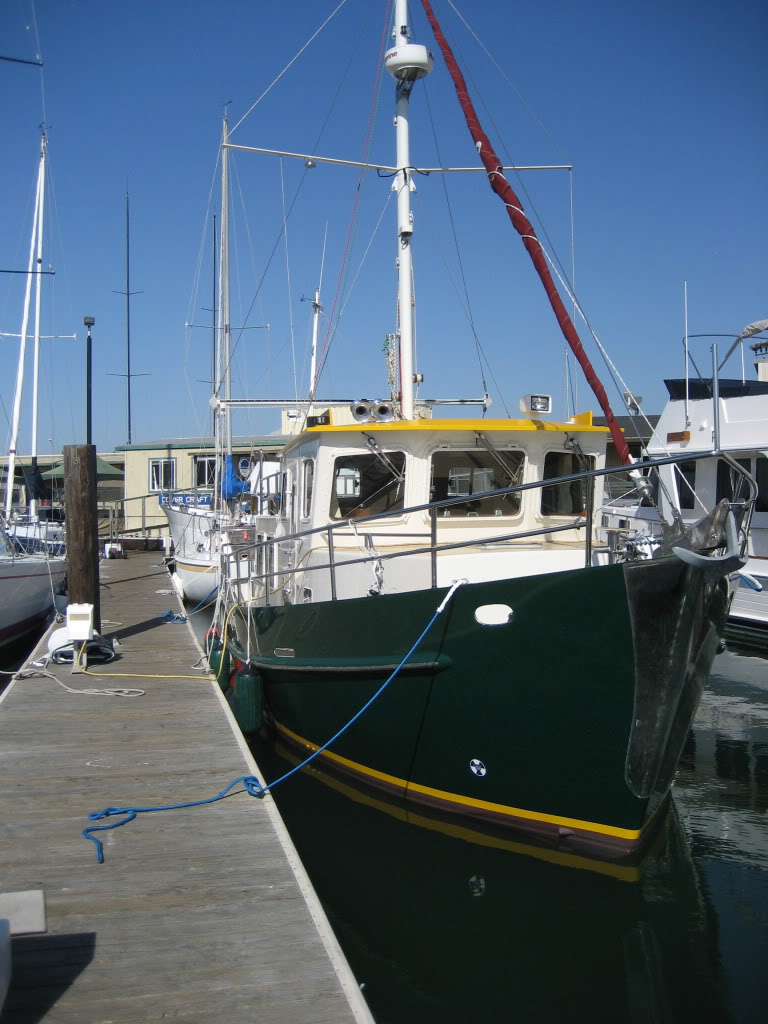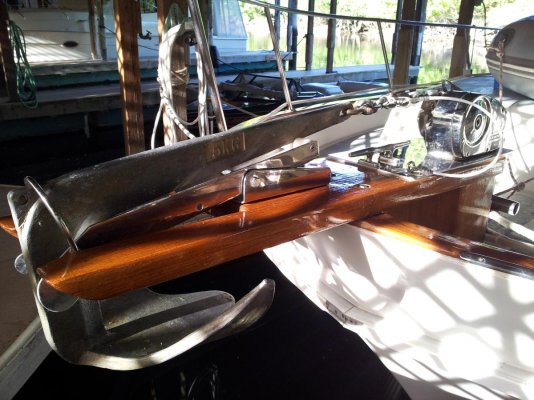I've thought quite a bit about this dragging thing. I think the thing about dragging, after the anchor has set, say in unexpected blow conditions, is the way it drags rather than whether it does or does not, as all have their holding limit. Some, like the Bruce, and maybe the Danforth I suspect, will drag along still set for a bit, but then because the shape does not favour it digging in further, will pop out, bounce along a bit, then attempt to set again, and may - or may not - depending on the forces involved and the speed of the drag, and the bottom type. Others, like the Rocna, Manson, Spade, XYZ, etc, will tend to dig in further and just drag through the bottom for a bit, but in the end will scoop up and hold so much bottom they either prevail and stay set and stop moving, or they pop out. After which their ability to rid themselves of the accumulated bottom and re-set again will decide what happens next. Some, like the Rocna and maybe the Manson Supreme are better at this than others, because the roll bar keeps their tips downward pointing which is a must for quick re-set. The third kind of drag is what you might call 'controlled' drag, and is what a well set plow shaped anchor does, (and in that sense the Sarca fits in there also), the operative word being well set. If well set, if the hold is overcome, instead of popping out, the anchor stays buried because the shape of the fluke, like a plow, keeps it headed south as it were, and by it's shape it can shed accumulated bottom substrate, and move. It will drag a few feet of so, then often hold again, so the boat may move a short distance, but is not dragging in an uncontrolled way.
Some have called this 'streamlined in the direction of the pull', and do not favour it because it seems counter-intuitive to provide less resistance in the direction of pull - fair enough. However, I think of it as shaped to not only shed bottom coming up, but when buried, to provide a high amount of resistance, but if this is overcome, then the shape, as it moves forward, tends to drive it further down, rather than fill with bottom it can't dispose of, whereas concave fluke types either 'win the tug-o-war' or have to come up to spit the dummy (bottom), and try again.
Of course, all anchors will have an absolute limit. It's when that occurs, and what happens then that gets exciting. It still clearly pays to not expose your boat to that extreme if at all possible - and we do. Which fortunately, is why so many happy owners of other types remain happy with their choice, I guess. As has been said - "an anchor never fails you until it does..."



